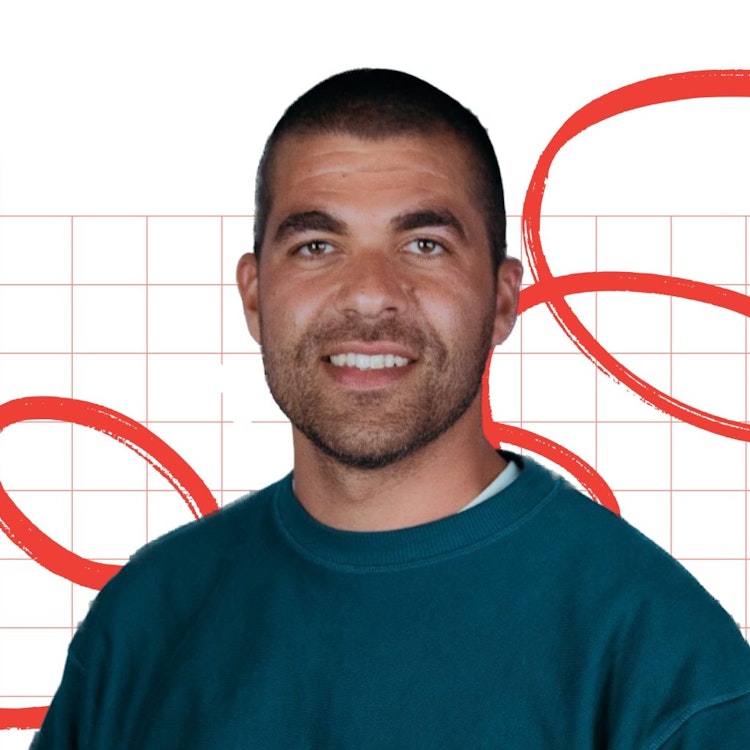“If you’re reading this, you’re not doing it right,” replies Sabba Keynejad — cofounder and CEO of video platform VEED — when I ask him for his top tips for up-and-coming founders on scaling a remote team. “You are worrying too much about how it's all going to work out. You need to stop reading and start doing.”
Aside from trying to put me out of a job, Sabba is eager to share what he has learnt — and is learning — from building a team of 200+ people that is remote first and asynchronous as possible.
In our Startup Life newsletter, he shared his top tips.
Figure out your central tool
As a tech company, everything starts with the engineering team, so our central tool is where we write our tickets. This is the tool we spend the most time in, it’s the tool we spend the most time thinking about and everything links out from there. But our needs have changed as we’ve grown.
As you scale, keep asking, ‘Is this tool right for us right now? Does another tool have the bits we’re missing? Does the value of a new tool weigh heavier than the pain of shifting to something new?’ We started with Trello then moved to Jira, for example, as it scaled and dealt with complexity better.
You don’t have to spend all your money on tools.
Tools are essential to remote and async companies. That doesn’t mean you have to use the fanciest, newest thing on the market, even as you get bigger.
Sometimes the best tool is the cheapest, or the tool that has the least friction because people already know how to work with and use it. For example, we use Google Hangouts for our meetings, including our all-hands, because why wouldn’t we use something that already comes bundled with the Google stuff we pay for?
Create a demo channel
To know what people are working on needs an extra layer of thought in remote teams — in an office, you can just ask for updates across the desk or chat about your work over a coffee. We have a channel in Slack where people can share their work.
Our teams record videos to share what they’re working on each week. People can get creative with it, leverage AI to make it better and it’s fun — we have demo awards at the end of the month for the best videos. Most importantly, it helps people see what’s happening across the company.
Leverage video
As well as team demos, use video for monthly CEO updates. You can be clear and concise and the team can see the emotion behind the words. This is way more effective than a written memo. Once your headcount passes a certain number, you won’t know everyone personally, so you need to find other ways to get them to believe in your vision.
Use video for onboarding new team members too
A good onboarding experience is one of the most impactful tools for long-term retention and employee success. For example, you can use video to show them new tools, explain your communication strategy, outline the team breakdown, discuss the reasons why you started the company and walk them through where they can find everything. This also makes it consistent across the board and easy to replicate for new team members, which is essential if you are hiring quickly.
Change your location strategy as you grow
It’s possible to be completely async at 10 people. Once you get bigger, you need to change the way you work. To get things done more efficiently doesn’t mean people need to be in the same office, but you might want teams to be in similar time zones. You might also want to get together every so often, and you’d rather have people travel on trains than planes. In both of these examples, you can still hire a remote team, but you might start setting geographical boundaries.
Change your comms strategy as you grow
There’s very little room for error in remote communication, which is why it needs a lot of thought as you scale:
- Between 12 to 15 people, you will need to make a conscious effort to keep everyone aligned. What used to just roll off the tongue naturally in meetings and organically spread to the rest of the team will no longer work. You now need processes like roadmap documents and ways of regularly telling everyone what the company is doing and why it’s doing it. As a start, introduce formal all hands meetings and regular CEO updates.
- Between 50 to 60 people, there are too many people for you to give your full attention to, and people start to feel undervalued and underappreciated and information won’t flow naturally. This is when you need a first level of management who can spend 1:1 time with the team. You probably want them all in the same time zone. You also need a company knowledge base — also known as an intranet or company wiki — to keep everyone in the loop, to guide them to information and to access support. It should reference all the company tools, how to use and access them. You can use tools like Notion, Google Docs or Confluence for this. Make sure this tool is discussed during onboarding, pinned somewhere easy to find and regularly mentioned in all hands meetings or in 1:1s. Adapt your all-hands meetings at this point too. You can no longer be off the cuff — you need structure and planning.
- At 150 people, it’s a big company and you need to really grow up. This is when I felt I actually became a CEO. Internal communication needs to be a well-oiled machine. You need to have clear processes in place on how information trickles through the company. For example, managers should be using their 1:1 time to ensure employees are clear on the company direction. As founder and CEO, you have to keep finding ways to motivate the team and drill in company culture, and that means being visible and beating the same drum again and again. For me, that looks like using CEO updates to reinforce why we exist, reiterating the company vision and mission, any updates or strategy thoughts and also having some fun with it.
On the subject of… scaling remote teams
1. How do you choose a tech stack for a hybrid team?
2. Can you scale a fully remote team? The team at collaboration tool GitLab thinks so. They also think you need to have fewer but way better meetings for it to work.



